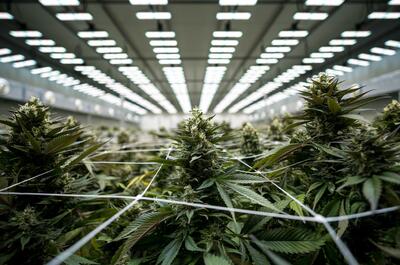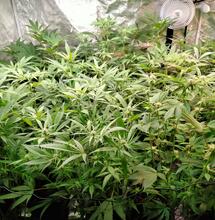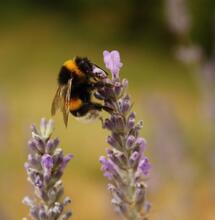An Interview with Martin Anker from SANlight

Below is the exclusive interview with Martin Anker of SANlight, where he shares extensively his experience and expertise on lamp use for growing Cannabis.
Hi Martin, how would you say horticultural grow lights have changed over the past 30 Years?
Lots of changes happened, especially in the last decade. We had HPS, MH, and fluorescent tubes thirty years ago. These lights haven’t been dimmable, spectrum and efficiency have been poor, and many of these lights were not designed for indoor cultivation. Over time the industry adapted these lights to make them usable in indoor rooms.
Ten years ago, my company SANlight launched the first working LED system for the hydroponic industry. Since then, improvements have happened rapidly. Nowadays, we have superior efficacies on clever designs available. DIY Led solutions are not asked for anymore because, in the last few years, the quality and performance of led grow lights went upwards while the prices got lower.
How do LED lights differ from HPS grow lights?
As many different led lights are available on the market, I will focus on our Led Systems here. Compared to classical HPS systems, our SANlight EVO series has double the efficacy of an HPS system regarding PPF output. Due to our unique secondary optic, we can spread the light much more uniformly and with lower losses over the canopy. In general, energy savings of more than 50% can be reached easily.
In practical usage, our EVO series can be used in all stages of growth, from seedling to flower, because the light can be dimmed and has a vast spectrum. Compared with discharge lights, a grower has to switch between MH and HPS bulbs for veg and bloom. Last but not least, the lifetime of SANlights EVO Series is 90.000h, which is ten times longer than an HPS bulb.
What is the easiest way to understand PAR for a beginner grower?
The PAR region describes all light wavelengths which contribute to photosynthesis. Generally, it is defined from 400nm to 700nm. Discussions are ongoing to expand this definition because also other wavelengths may contribute to photosynthesis.
Do you think indoor or outdoor Cannabis is superior and why?
Due to rising energy costs and the global goal to reduce CO2 emissions, someone could argue that growing in greenhouses will be the future. Studies show that a tomato produced in Spain and transported to Austria has a lower CO2 footprint than a tomato produced in Austria. The main factor for these high CO2 footprints of an Austrian Tomato is greenhouse heating.
As greenhouses are inefficient for heating up, may the future will show us that growing indoors can be one solution to reduce CO2 because indoor cells can be controlled and heated quickly. Clever control loops can also reduce the CO2 output from indoor cells. In our new facility, we will start a research project regarding the CO2 footprint of indoor produced weed compared to greenhouse production. Its a fact that indoor-grown Cannabis has better and more stable quality, while the production costs in greenhouses are cheaper. Now it is time to make indoor production more efficient.

How important is UV for flowering Cannabis plants, in your opinion?
Many people are asking about this topic. We have done a few studies in the past and read many articles about UV. Every study that showed that UV light could increase potency added UV light to a given light source. Following the BPFD has been increased. A grower will get more flowers, resin, and cannabinoids if he adds more light to the grow.
Our internal studies showed that we could reach the same increase in potency and weight with more light instead of added UV. But we are still working on that topic to clarify it scientifically. As soon as this is done, we will publish our results in our blog on sanlight.com. If we can prove the concept that added UV is giving the grower advantages, we will launch a UV bar.
We will definitely not implement UV LEDs in our EVO series because of the poor lifetime of UV LEDs. Based on the led (mid-power or high-power) we are talking about lifetimes from 3000h to max. 25.000h. Therefore, integrating such LEDs to the EVO series would lower the lifetime Dramatically.
What is the correct distance to hang a grow light and why?
This strongly depends on the light concept and the needed PPFD levels. In general, distance from light to canopy influences efficacy and uniformity dramatically. If you are unsure how to hang our EVO series, check out our blog, manual, or YouTube channel. If our EVO is hung correctly, we can simultaneously have diffuse light and uniform light distribution.
With light bar systems, a grower has to decide between max. Uniformity (usually at distances between 15 to 25cm) or diffuse light without a good uniformity. This can be reached by hanging the light higher, e.g. 40cm. Diffuse light penetration increases depth penetration, while uniformity is essential to optimize yield and consistent quality.
Is there an optimum spectrum that Cannabis plants use?
We have been doing professional research on different light spectrums for more than 12 years. Following the general output, I want to state here that the perfect light spectrum strongly depends on the PPFD levels used.
A broad-banded light spectrum with low spikes has a poor efficacy at low intensities but much better performance at intensities > 800µmol/m2/s. Very narrow banded light spectrums (only red and blue) work well in low-intensity applications. In a greenhouse for ornamental plants or leafy greens. The right far red (730nm) content in a spectrum does increase yield and performance. An extensive stretch will only happen if the far red content is exceptionally high compared to the red content.
Certain wavelength effects depend strongly on the ratios between the different wavelengths. E.g., we examined bigger stretches by adding more blue while lowering green content. Greenlight does drive photosynthesis. The higher the light intensity, the more important green light becomes. At the same PPFD level, we have a relatively 20% higher potency with our standard spectrum as with HPS.
What are the main things a grower should look out for when buying an LED grow light?
Watch out for quality. Many companies are claiming that they are using e.g., Samsung LEDs. This does not mean that they are using the good LM301H Samsung chips. By the way, at the moment, Samsungs LM301H and the Seoul 3030C are on the same performance levels, while the Seoul 3030E package is at the same level as Samsung's LM301 EVO. So Samsung does not guarantee the best efficacy. Last but not least, ask yourself if you trust the manufacturer’s Datasheet. Check out the protection of your LEDs. A spray cover has a few advantages but can hardly be cleaned. Therefore the led chip will degrade faster by dirt than by running time.
Massive thanks for your time today Martin, where can our readers find out more about SANlight?
You will find our products and information about our trials on our webpage www.sanlight.com. Also, we are continuously posting on Instagram (sanlight_led) and YouTube(SANlight Led).



